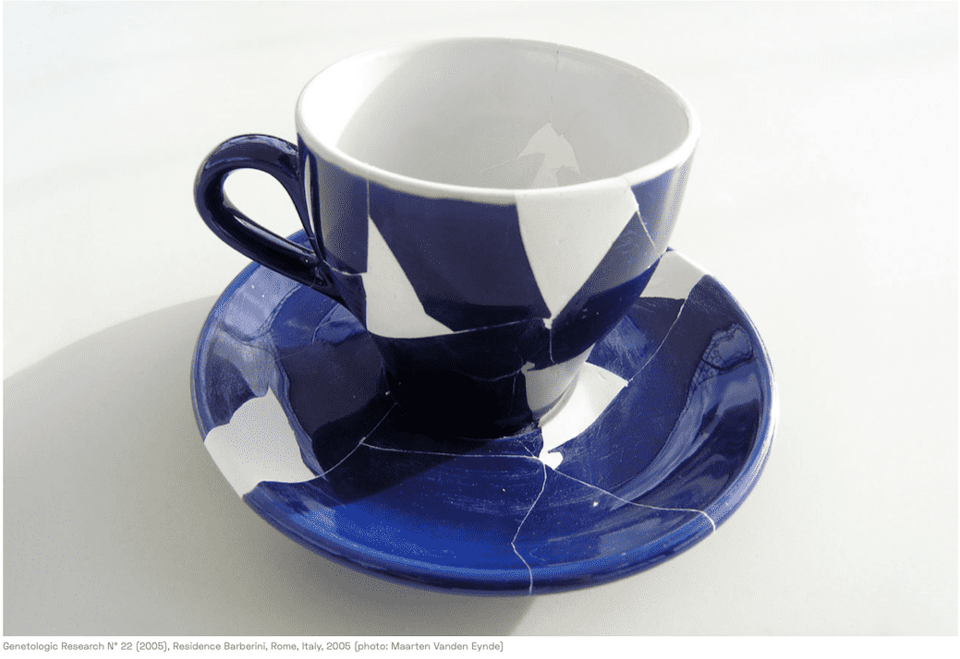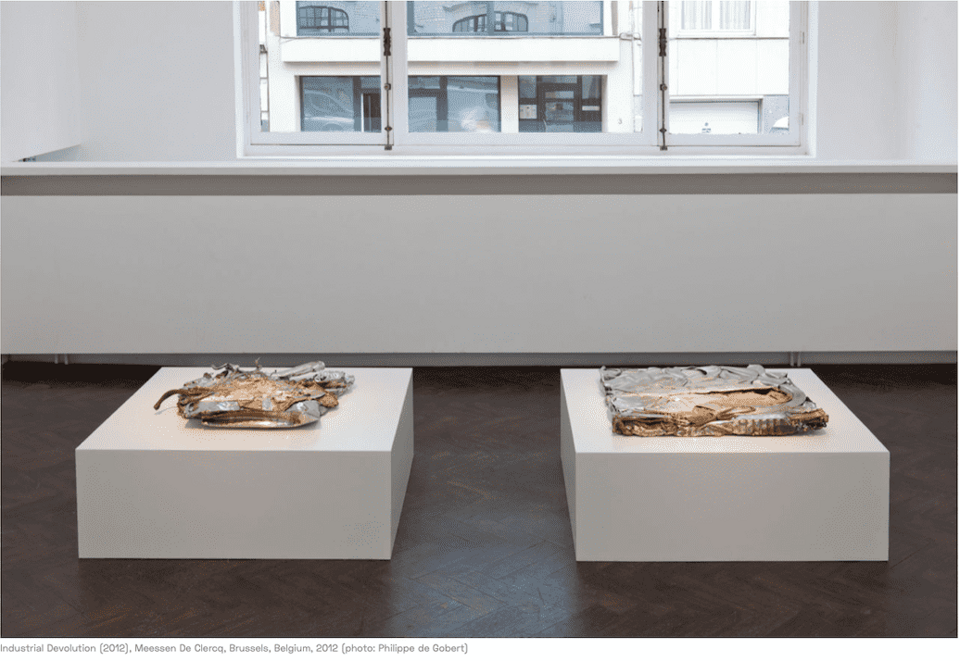postmaster@museumofanthropocenetechnology.org, via Leggiuno 32
Laveno Mombello
21014
Italia
Three works by Maarten Vanden Eynde
(At the occasion of his exhibition at MuZee in Oostende (B) during 2021, the artist Maarten Vanden Eynde asked 10 friends/experts to interpret and describe a few of his works in the exhibition. What follows are the contributions by the director of the MAT)

Genetologic Research N° 22; IKEA 60937, 2005 A.D., Rome, Italy,
It’s beautifully repaired, you think, but also beautifully broken! Everyone knows that you can only glue a broken cup together again - successfully - if the fragments aren’t too small, if their edges are still sharp, and if the pieces fit perfectly.
It’s certainly beautifully repaired, but how could it have broken apart so beautifully? It may have simply fallen off the table, been thrown against a wall, or been bashed with a hammer. A whole story can be created around this cup, precisely because it is no longer simply a cup, but rather a collection of fragments. The individual fragments lying separately on the floor or workbench were meaningless. But the intact cup was almost devoid of meaning too, apart from its serving a purpose.
A cup glued together from its fragments is another matter: it – has – clearly - had – a – life - already, and that is something you can muse upon as you slowly sip your tea or coffee from it.

In this collection, long objects are hung beside long objects, round objects beside round objects, and so on. It seems that the artist, and we with him, no longer know what purpose all these things served, so, they are merely arranged according to the simplest criterion: their shape. However, we notice that the ring-shaped objects have a different colour. This might suggest that they are of a different type, that they were made in a different way, or that they had a different function.
If we were to use increasingly detailed criteria: shape, colour, size, material, texture etc… then we would probably be able to find out what actually belonged together. We would discover what purpose all these objects served, or perhaps find a new use for them. However, it may also be the case that with ever more criteria, every object would eventually become unique.
One single photo in this series, one pair of objects, already seems to be unique and bears scant relation to the rest.

In order to assign a meaning to the two pieces in front of us, in order to explain them, we would have to take them apart or open them out. By the way: in some languages the word “explain” literally means “unfold”: “ex-pliquer” in French, for instance, or: “s-piegare” in Italian. However, taking apart and unfold are two actions that have very different outcomes. If we take something apart then it separates into individual pieces, and if we want to assign a meaning to it, we will begin with those pieces. On the other hand, after being unfolded an object is still coherently joined, and its meaning lies in its cohesion.
Perhaps one of the objects - lying here before us - would come apart, whilst the other would remain one? Would both these objects have different meanings as a result? As long as we do not execute the act of taking apart or unfolding, we can only guess at this. Some people say that art is about what remains INvisible, about what is hidden in the folds, wrapped up…
postmaster@museumofanthropocenetechnology.org, via Leggiuno 32
Laveno Mombello
21014
Italia